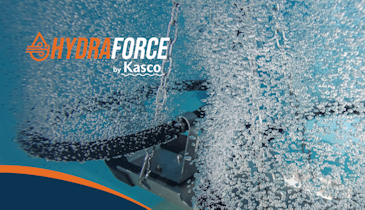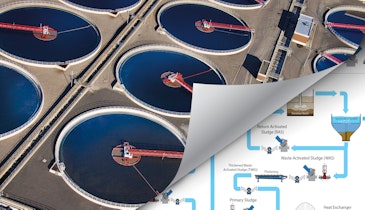
Interested in Filtration?
Get Filtration articles, news and videos right in your inbox! Sign up now.
Filtration + Get AlertsSome contaminants are more difficult to detect than others. While some give off an offensive odor or taste, others are completely undetectable by the senses.
Nitrate is one such contaminant.
Nitrates can come from many sources, making their presence in water almost unavoidable.
“Plants need nutrients to survive, and farmers add nitrate fertilizer in soil to increase crop production,” says Khushbu Karan, AdEdge applications engineer. “Therefore, one of the common sources of nitrates is crop plants.”
Another source of nitrates are plants that consume nitrogen in the air and pass it to the ground through their roots.
Sewage and human and animal waste can also be a source of nitrates, as the nitrogen often present in septic system effluent is converted to ammonia in soil. The bacteria in the soil then convert the ammonia to nitrates.
“As we all know, excess of anything is not good,” says Karan. “When excess nitrates that remain unused by plants percolate through the soil into groundwater, nitrate contamination occurs.”
Much like the odorless, tasteless and colorless contaminants uranium and arsenic, nitrates also lack any telltale signs, meaning they can only be detected through laboratory testing.
Nitrates can lead to serious health risks, particularly for livestock and infants younger than six months old.
“Babies are more susceptible to nitrate poisoning since they have nitrate bacteria present in (their) stomach(s) that convert nitrates to nitrites that are noncarriers of oxygen,” Karan says. “It can therefore cause suffocation and breathing problems, leading to serious health problems.”
Fortunately, AdEdge has several nitrate removal options for almost any application.
The ADNO3 IX anion exchange selective resin is supplied in moist, tough, uniform spherical beads, which removes nitrates without the expense of nitrate dumping. The media is NSF/ANSI-61 certified and is ideal for use in drinking water, non-potable water and environmental remediation applications.
“AdEdge also offers reverse osmosis membrane solutions using advanced membrane technology coupled with packaged treatment modules for a complete integrated solution,” Karan says. “It can serve various applications including drinking water, mining, boiler feed and remediation.” A reverse osmosis system reduces total dissolved solids, which include nitrates, total suspended solids, pathogens and other contaminants. The package consists of both chemical and mechanical pretreatment for long-term membrane operation and performance.
If your water supply contains elevated levels of this invisible pest, contact AdEdge for a customized treatment solution to bring your water back to a clean, safe and healthy state.
About AdEdge Water Technologies
Founded in 2002 and headquartered just north of Atlanta, Georgia, AdEdge Water Technologies specializes in the design, development, fabrication and supply of packaged treatment solutions, specialty medias, innovative technologies and membranes that remove contaminants from process or aqueous streams. AdEdge has extensive experience in the removal of arsenic, iron, manganese, hydrogen, sulfide, fluoride, nitrate and uranium from water. For more information, call 866/823-3343 or visit www.adedgetech.com.





